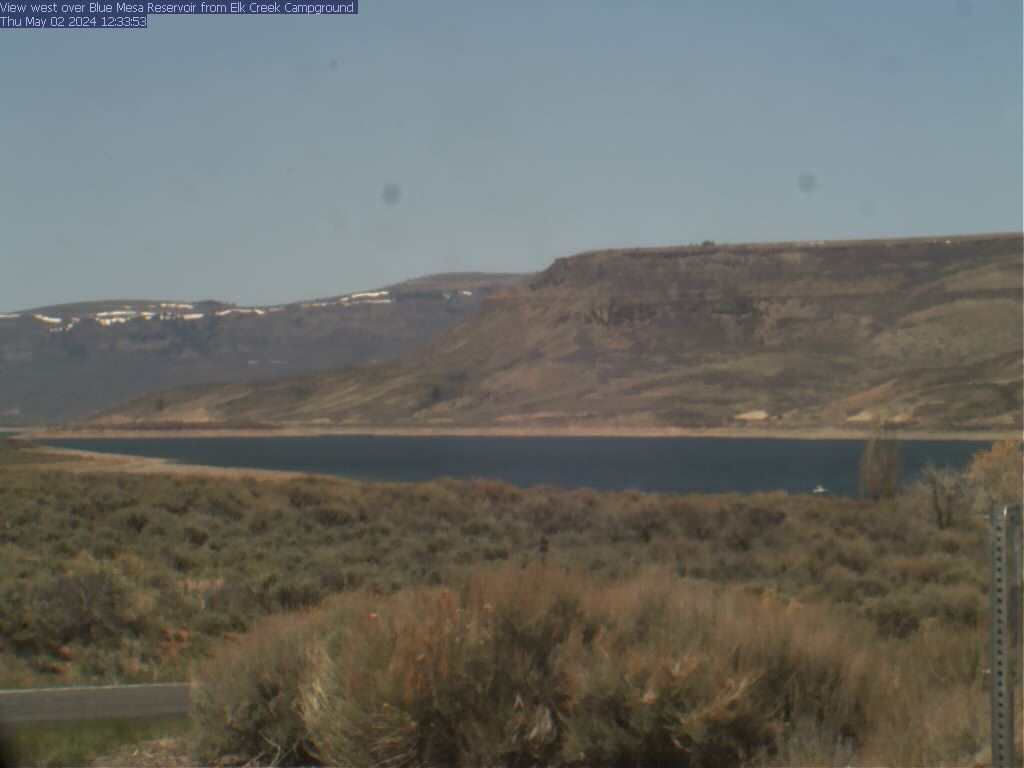Curecanti National Recreation Area, Colorado Weather Cams
Elk Creek

Curecanti National Recreation Area: A Legacy of Water, Exploration, and Conservation
Curecanti National Recreation Area, Colorado Weather Cams. Nestled in western Colorado, Curecanti National Recreation Area is a stunning expanse of reservoirs, canyons, and rugged landscapes along the Gunnison River. Established in 1965, the area is home to Blue Mesa Reservoir, Morrow Point Reservoir, and Crystal Reservoir, each created as part of the Colorado River Storage Project. Beyond its recreational appeal, Curecanti has a deep history tied to Indigenous cultures, railroad expansion, and water conservation efforts.
Indigenous Presence and Early Exploration
Human occupation of the Curecanti region dates back at least 10,000 years. Archaeological evidence suggests that Ute, Cheyenne, and Arapaho peoples moved seasonally between the mountains and the valleys of Montrose and Grand Junction, drawn by the abundance of game and vegetation. The Gunnison River provided a vital water source, shaping the migration patterns of Indigenous groups.
Spanish explorers and fur traders later traveled through the area, using the Old Spanish Trail, which linked Santa Fe to Los Angeles. This route introduced Indigenous communities to Anglo and Spanish commerce, marking a shift in regional trade dynamics.
The Railroad Era and Settlement
In 1853, Captain John W. Gunnison led a Pacific Railroad survey through the region, assessing its potential for rail expansion. Despite his findings that the terrain was too difficult for a railroad, the Denver & Rio Grande Western Railroad was built in 1882, transporting ore, coal, cattle, and passengers through the Curecanti area. The railroad spurred the development of small towns such as Iola, Cebolla, Sapinero, and Cimarron, which thrived until the railroad ceased operations in 1949.
Water Conservation and the Creation of Curecanti
By the 20th century, the Gunnison River’s waters became highly coveted for agriculture and municipal use. The Gunnison Tunnel, completed in 1909, was a groundbreaking six-mile irrigation tunnel that delivered water to the Uncompahgre Valley, supporting farming communities.
In 1956, Congress passed the Colorado River Storage Act, authorizing the construction of three dams on the Gunnison River to regulate water flow and provide hydroelectric power. The resulting reservoirs—Blue Mesa, Morrow Point, and Crystal—were completed between 1965 and 1976, transforming the landscape. Curecanti National Recreation Area was established in 1965 to manage the land surrounding these reservoirs, ensuring recreational access and environmental protection.
The Surrounding Area: Gunnison and Black Canyon
Curecanti is closely linked to Gunnison, Colorado, a town founded in 1874 as a mining and railroad hub. Gunnison remains a gateway to outdoor recreation, offering access to hiking, fishing, and boating.
To the west of Curecanti lies Black Canyon of the Gunnison National Park, a dramatic gorge carved by the Gunnison River. The canyon’s sheer cliffs and narrow passageways make it one of Colorado’s most striking geological formations.
Modern Curecanti: Recreation and Conservation
Today, Curecanti National Recreation Area is a popular destination for boating, fishing, and camping. Blue Mesa Reservoir, the largest body of water in Colorado, is renowned for its lake trout and Kokanee salmon fisheries. The area also offers hiking trails, scenic overlooks, and historical exhibits, including the Cimarron Rail Exhibit, which preserves the region’s railroad heritage.
Efforts to expand and protect Curecanti continue, with legislation proposed to increase its boundaries and transfer land from the Bureau of Land Management to the National Park Service. These initiatives aim to enhance wildlife conservation and recreational opportunities.
A Legacy of Water and Wilderness
Curecanti National Recreation Area stands as a testament to Colorado’s evolving relationship with water, industry, and conservation. Whether exploring its reservoirs, hiking its trails, or learning about its railroad history, visitors experience a landscape shaped by natural forces and human ingenuity.
For more information, visit the Curecati National Recreation Area official website.
